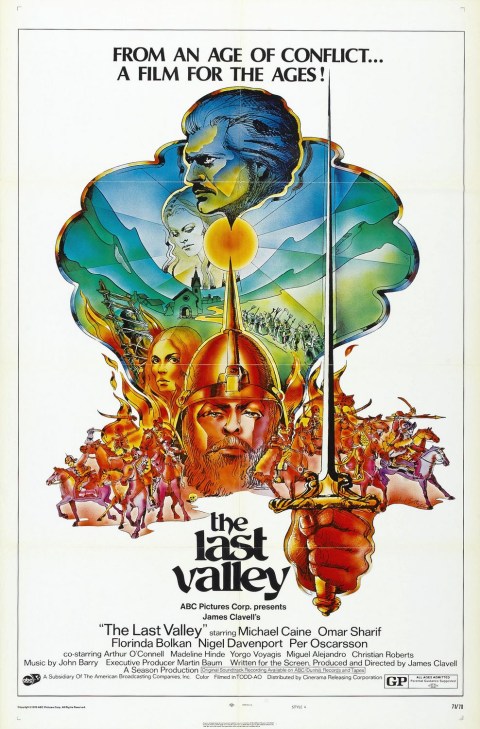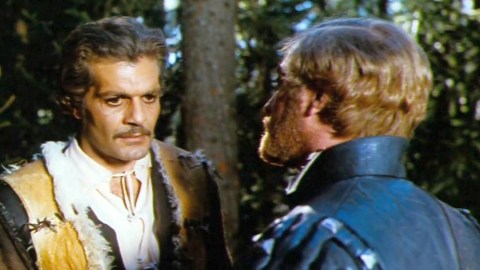17. 4. – 19. 4. 2026
The Last Valley

 Original title: The Last Valley
Original title: The Last ValleyDirector: James Clavell
Production: 1971, UK / USA
Length: 125 min.
Screened:
70mm film seminar 2009: 70mm 2.2:1, Colours faded, MG 6ch, Spoken language: English, Subtitles: CzechAnnotation for 70mm film seminar 2009
The Last Valley was seen as a major blockbuster at a time when the enthusiasm for the “road show” had already waned. Set during the Thirty Years’ War in the 17th century, it only vaguely illustrated a more intimate and thoughtful story. Literally ‘the last valley’, untouched by war, hides a village that has managed to avoid the terror and violent pillage of the army. German schoolteacher Vogel (Omar Sharif) accidentally discovers the village, as does an exhausted army of ruthless mercenaries led by the pragmatic Captain (Michael Caine). The Captain and Vogel make an unlikely pair: a realistic mercenary with a dream of peace and an idealistic rural philosopher discouraged by life, facing death. Instead of the Captain treating the place as just a stopover to wait out the winter, he becomes entangled in rural life and the intrigues of the local inhabitants. The alliance between Vogel and the Captain conveys a picture of a fragile peace in the valley that will last only until the army leaves to fight again in the spring and the peace of the village is destroyed by greed, lust and religious fanaticism. The result is a gripping character study of how people can adapt their lives and their existence to fit into changing circumstances and how little impact these efforts can ultimately have.
Clavell manages to set the film in the limited natural space of the valley, but in the finished film, some unexpected cuts clash with the norms of classic film and erase the intended originality. The foolish political, religious and social motivations of the action are fully explained, so there is no room for allegorical tone, but paradoxically the film does not suggest the reality of the time.
The premiere took place on January 21, 1971 at the Rivoli Palace in New York. At that time, the cinema was already equipped with the Dimension-150 (D-150) system¹, with which the film was projected in a width that was almost equal to the angle of the human field of view. At the end of the 1970s, the film could only be seen in the Czech Republic on television, so its screening at the Mír cinema at the 70mm film festival in Krnov in 2009 will be its premiere.
Notes:
1. “In 1963, Todd-AO purchased the Dimension-150 from inventors Dr. Richard Vetter and Carl W. Williams. The D-150 was a 65/70mm system and, like the Todd-AO, it achieved the meaning of application when shooting scenes with various wide-angle lenses ranging from 50 and 70 to 120 and 150 degrees of angle of view (the resulting height-to-width ratio of the projected image was 1:2.71). “‘The Bible’ and ‘Patton,’ the only D-150 films, were performed elsewhere on Broadway, so the Rivoli never played a D-150 film.”
Beton, John: The Rivoli.